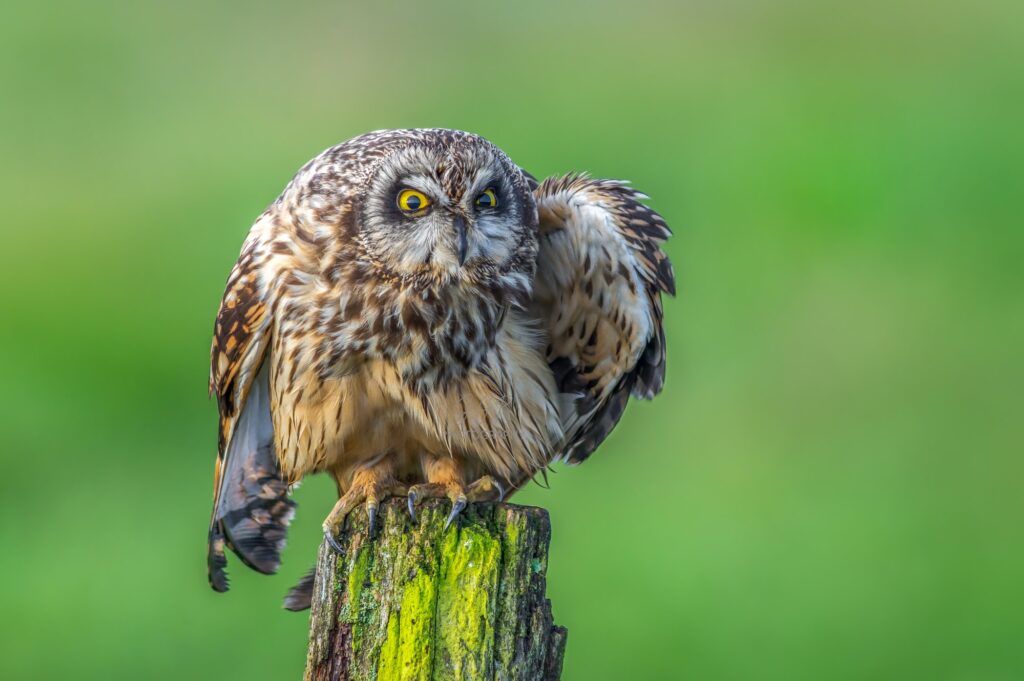The state of South Carolina is located in the southeastern region of the United States, bordered on the east by the Atlantic Ocean, and on the north by North Carolina (of course!). South Carolina’s climate is subtropical, which means the temperature is mostly hot and humid, and it has a mild winter.
The state has mountain, midland, and coastal regions, in which are a variety of state parks and protected land. This makes the state a great habitat for a wide range of owl species.
These beautiful birds give great benefits to our communities, especially when it comes to keeping the rodent population growth rate down.
So if you’re an avid bird watcher, stick around as we learn about the 7 species of owls in South Carolina!
Long-Eared Owl

- Scientific name: Asio otus
- Length: 13.7 to 15.7 inches
- Weight: 8.81 ounces
- Wingspan: 35.4 to 40 inches
Sighting one of these raptors in South Carolina is rare. Long-eared owls are found in the state during their breeding season, which is in the winter months.
They have mottled orange-brown feathers, striking orange eyes, and white eyebrows. As their name states, these owls have long ear tufts which are usually flattened but are raised when they’re alarmed.
Their diet primarily consists of voles, mice, and small mammals. If you ever decided to try to spot one, they’re found mostly in dense woodland areas inside shrub thickets, trees, and hedgerows.
Although they’re quite rare, their hoots are very loud. Male long-eared owls can sometimes be heard up to 1 kilometer away. Their calls usually sound like a deep catlike meow. Keep your ears open and you might find one!
Short-Eared Owl

- Scientific Name: Asio flammeus
- Length: 13 to 17 inches
- Weight: 7.3 to 16.8 ounces
- Wingspan: 33.5 to 40.5 inches
Most owls are nocturnal and stay awake during the night. The Short-eared Owl, however, is always active during the daytime.
The best times to look for this species of bird in South Carolina are at dusk or dawn in mid-January. They prefer to stay in places like the coastal grasslands, shrub-steppes, heathlands, prairies, and open spaces; you’ll even see them sitting openly on the ground.
Short-eared Owls have large, round heads with cute, tiny tufts protruding from the center of their forehead. They have a white or gray disk and a roundish ruff on their face, with yellow eyes and a black bill.
Their diet consists of voles, kangaroo rats, mice, lemmings, rabbits, and other small mammals.
Great Horned Owl
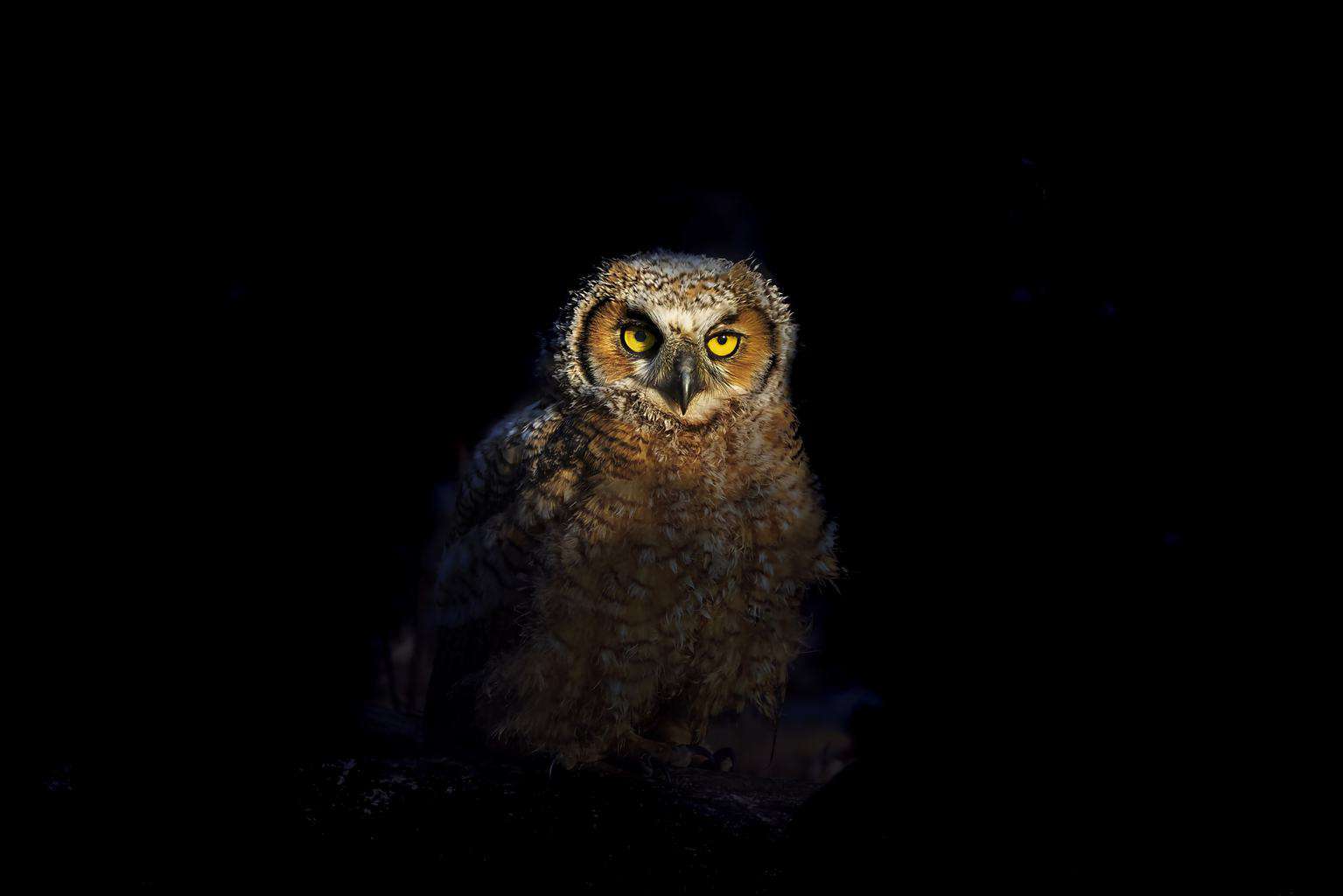
- Scientific Name: Bubo virginianus
- Length: 18.1 to 26 inches
- Weight: 50 ounces
- Wingspan: 55.2 inches
Great Horned Owls are the most widely distributed owls found in South Carolina. This variety of bird is seen all year round and they’re extremely adaptable to their environments. They’re able to survive in many types of habitats, including forests, suburbs, and even swamps.
They’re dark brown, with a squarish head and a white throat patch. They also have astonishing yellow eyes and wide-spaced ear tufts.
These owls are tremendously powerful and aggressive while hunting. They can attack snakes, ducks, hawks, skunks, and even larger animals like porcupines! They usually hunt at night for food, but when supplies are low, they may begin to hunt at dusk. In winter, they will hunt during daylight hours.
They’re considered to be aggressive, especially when they feel threatened. They hiss, scream, and even spread their wings and strike with their feet. They can also prey on other members of their own species.
Some people call them “warrior owls” and they’re largely admired by many people because of their courage, strength, and beauty.
Barn Owl
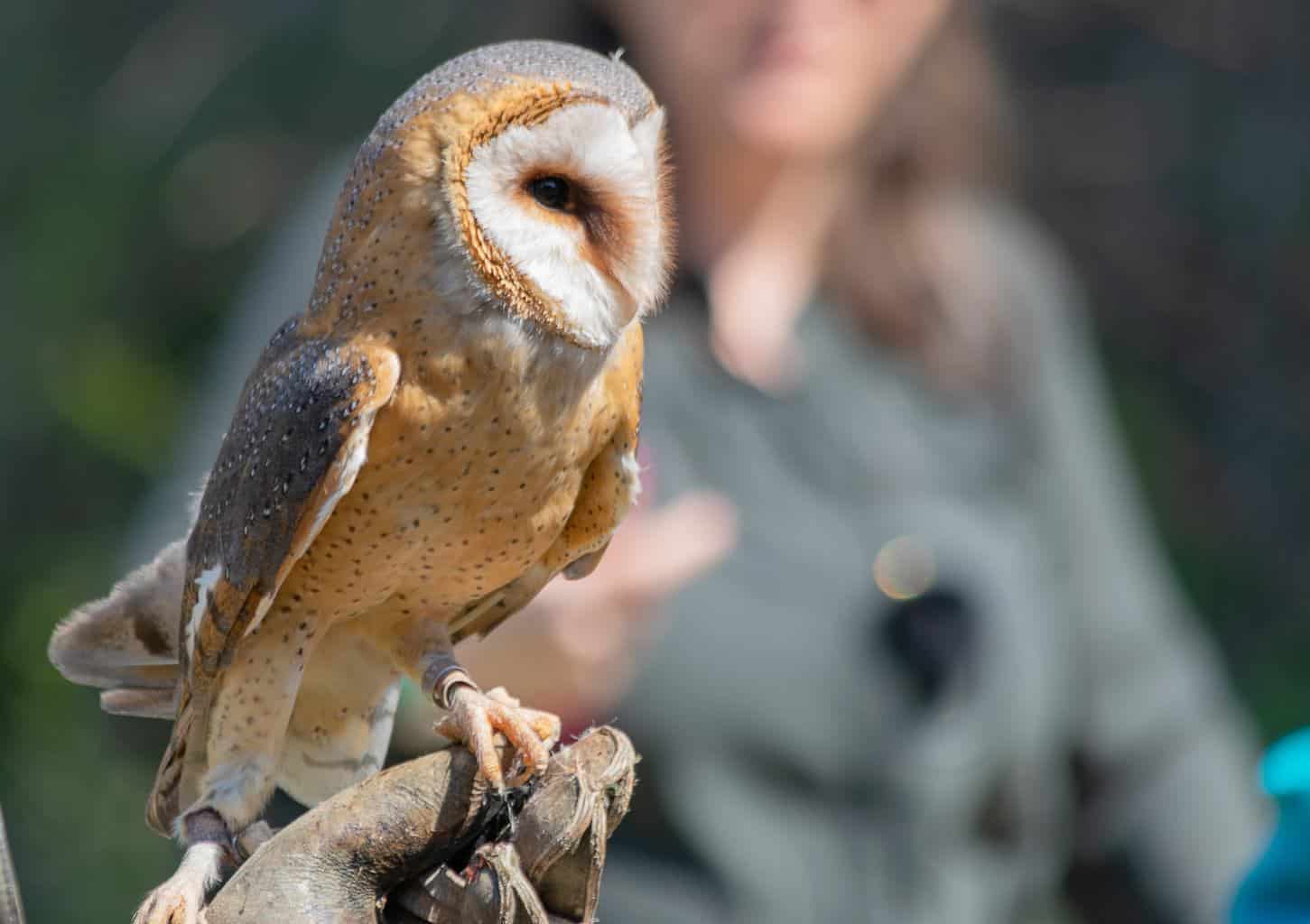
- Scientific name: Tyto Alba
- Length: 12.6 to 15.8 inches
- Weight: 14.1 to 24.7 ounces
- Wingspan: 39.4 to 49.2 inches
South Carolina has consistently harbored great resident populations of Barn Owls. They live in South Carolina all year round. They’re found in grasslands, pastures, marshes, woodlands, meadows, and farms. You’ll mostly find them in abandoned silos or barns, dense trees, and small tree cavities.
These are medium-sized birds and they have rounded wings with short tails. They have long legs and a smooth, round head without ear tufts. When you see them from a distance, they can appear pure white. However, these birds are generally pale brown in color with black eyes. They have a mix of gray and buff-colored feathers, reminiscent of tree bark, all over the head, upper wings, and back. Their face, underwings, and body are white.
Barn owls hunt silently and are strictly nocturnal. These owls don’t softly hoot as most owls do. Their raspy, harsh screeches are a common sound at night.
Barn Owls eat their prey whole and cough up bone and fur-filled pellets since they’re not able to digest them. They love eating shrews, voles, larger mammals, and small birds.
Lately, with spreading suburbs, changing agricultural practices, and a decrease in the quantities of barns, barn owl populations in the state are said to be declining in some regions.
Eastern Screech-Owl
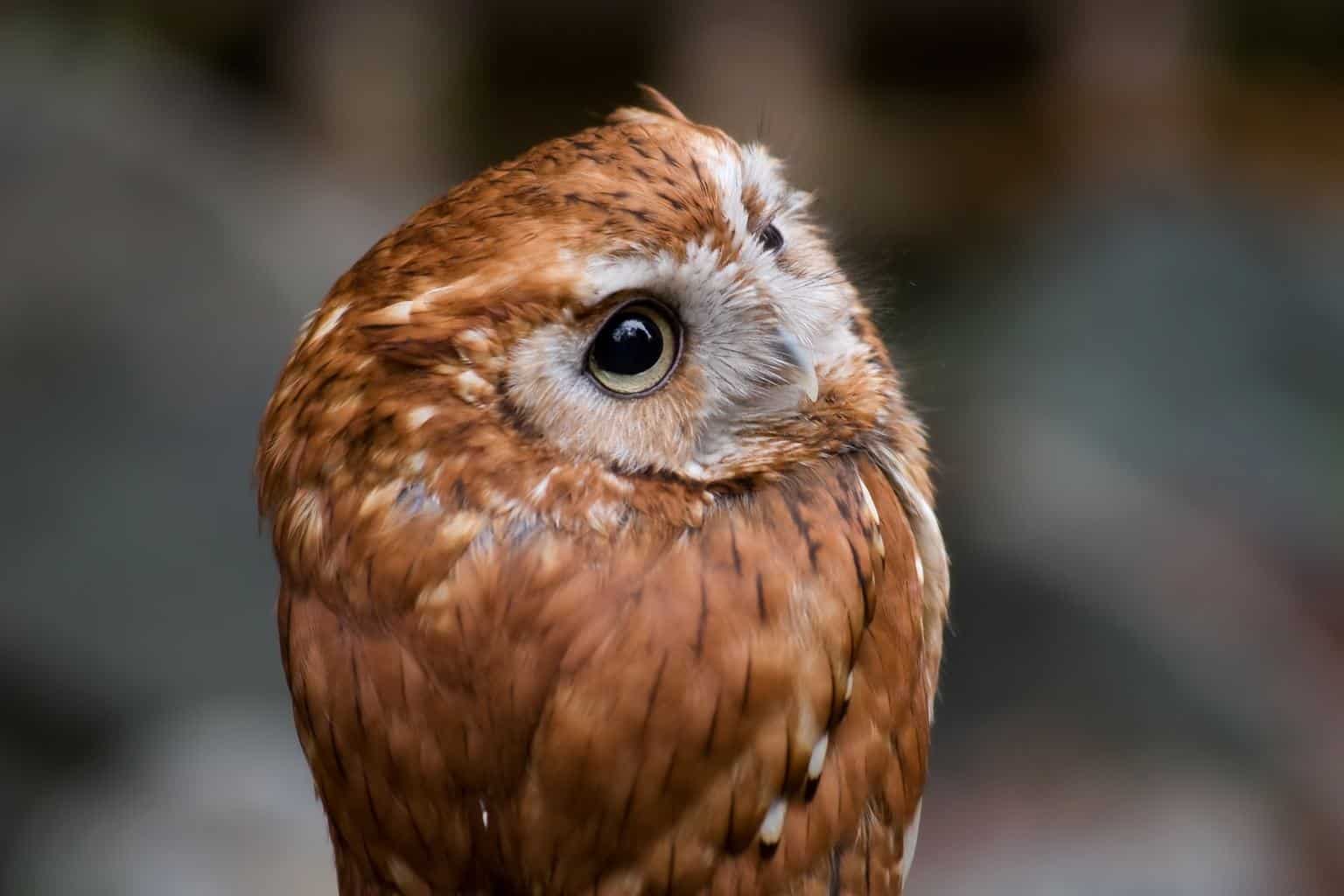
- Scientific name: Megascops asio
- Length: 6 to 10 inches
- Weight: 5.60 ounces
- Wingspan: 19 to 24 inches
Eastern Screech Owls are relatively common in South Carolina and can be found all year. This species is native to most wooded environments near the water and they adapt well to manmade developments.
The Eastern Screech Owl is a tiny, stocky bird with rounded wings and a short square tail. They’re mostly reddish-brown or gray in color, with complex patterns in their feathers that give them great camouflage features.
They’re common in the state, but they’re hard to find because of their minuscule size. If your eyes are sharp, you have a great chance of seeing this small sized bird in the daylight inside the cavities of trees.
Eastern Screech Owls have a wide variety of food in their diet. They can eat insects such as crickets, beetles, earthworms, and moths. They also catch rodents, small birds, frogs, and crayfish.
Northern Saw-Whet Owl
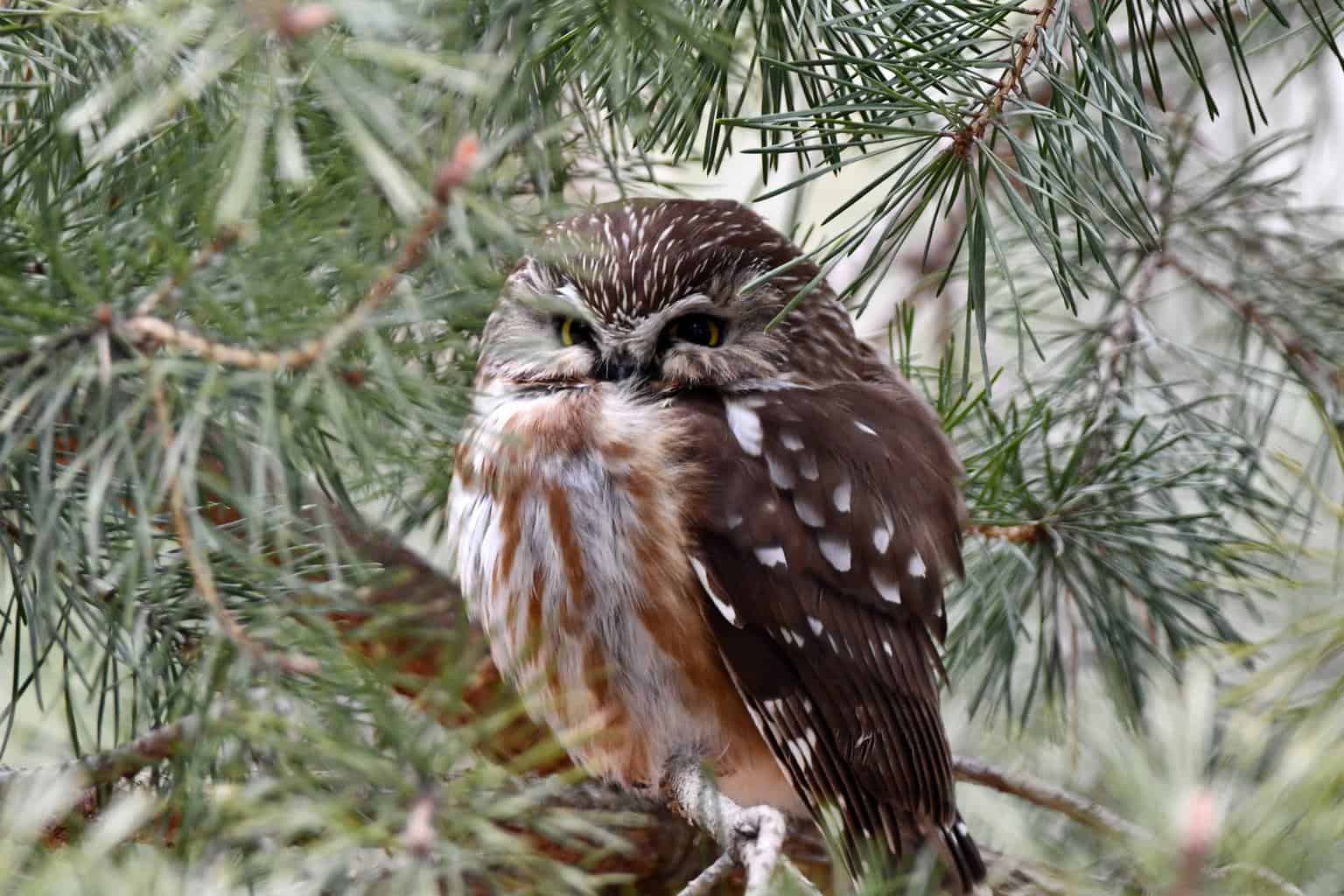
- Scientific Name: Aegolius acadicus
- Length: 6.5 to 9 inches
- Weight: 1.9 to 5.3 ounces
- Wingspan: 16.5 to 22.2 inches
Northern Saw-whet Owls are described as “rare winter visitors” to South Carolina. They’re found quietly roosting in groves and have nests in woodland areas.
They’re small in size so they’re also pretty hard to spot, but their signature call stands out from other owls. It’s a distinct “toot toot toot” that sounds like someone is sharpening saws— hence the name “saw-whet.”
They have catlike features, bright yellow eyes, and an oversized head. They’re commonly mottled brown in color with a white facial disk. Their heads are fluffy and white with spots.
Although these birds are sexually monomorphic, there’s a measurable size difference between the sexes. Females are generally larger than males. Research shows that these owls can be identified with 90% accuracy by comparing the owl’s wing mass and chord length.
Additionally, you can identify their age by looking at their feathers under UV light. Newer feathers glow pink under UV light because of porphyrins that fade over time. Young saw-whet owls will be unevenly pink because their feathers are fresh and came in all at once. When adult saw-whet owls have a partial molt, some older feathers may not show any pink color at all under UV light.
These tiny owls are cute but they’re fierce. They will eat small mammals ranging from mice to chipmunks and squirrels.
Barred Owl
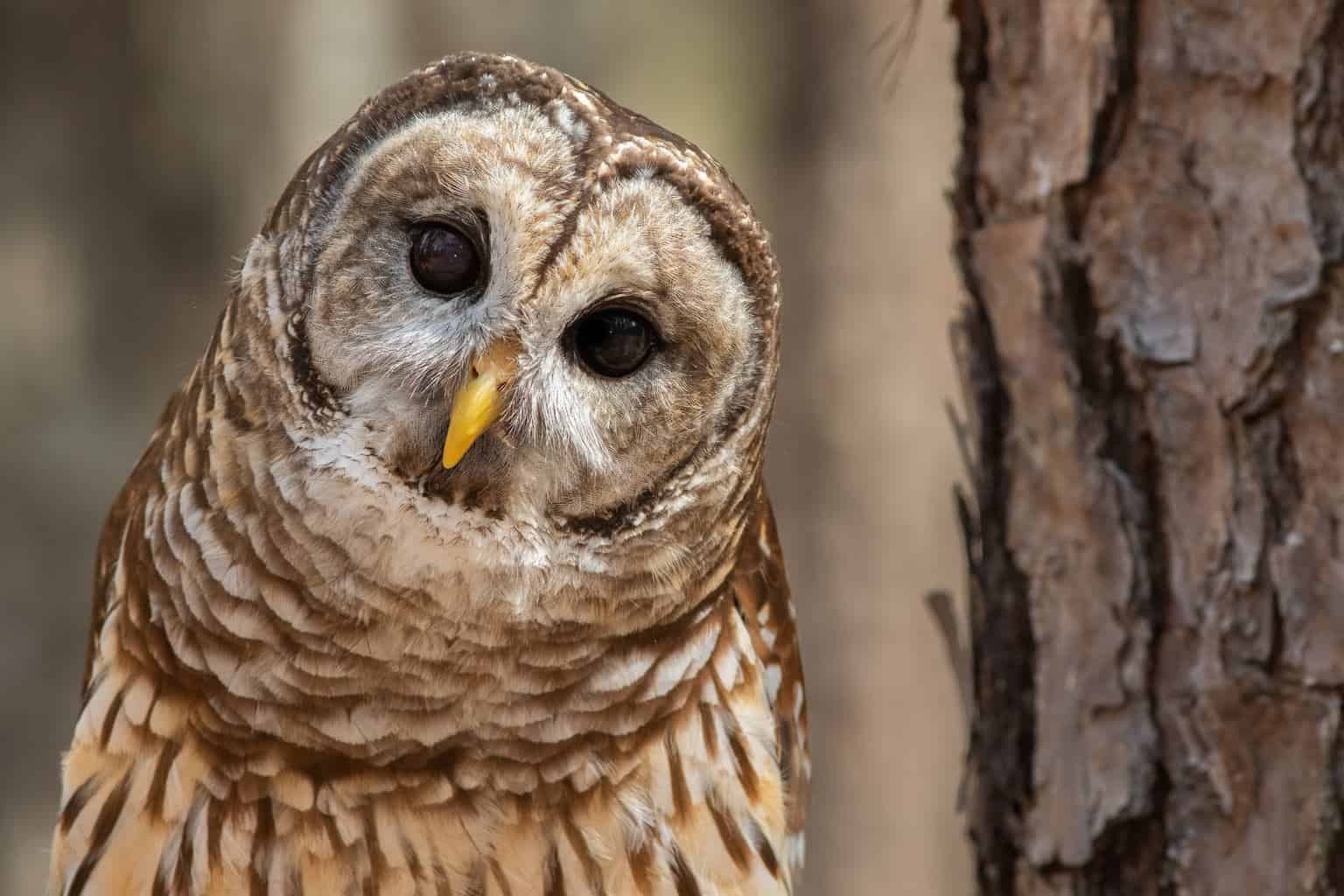
- Scientific Name: Strix varia
- Length: 16 to 25 inches
- Weight: 26 ounces
- Wingspan: 38 to 49 inches
Barred Owls also cover a vast range of areas in South Carolina. They’re found in dense forests near heavily wooded swamplands and in forests near the water.
They’re large birds with broad wings and short tails. They have rounded heads and a large facial disc of pale brownish-gray. Their eyes are dark brown and the upper parts of their body are deep brown and pale buff.
They prey on herons, geese, woodchucks, and insects. They’re opportunistic hunters and they’re not that picky with their food. They will eat any prey, especially the ones that are easy to catch, like frogs, lizards, and small rodents.
One interesting fact about them is that young barred owls climb up trees by holding on to the tree bark with their talons and bill, using their beak, climbing their way up to the trunk.
Final Thoughts
South Carolina has 37 different state parks and 7 different national parks across the state. Many owls make their way to South Carolina because of the extraordinary habitat the state provides.
These beautiful animals are not currently endangered or threatened in South Carolina so it’s best if we take the extra time to keep them safe and keep them at a good distance while looking at them.
Owls are truly one of the most majestic creatures in the world. If you want to know more about owls, check out our list of 6 species of hawks that can be found in South Carolina!

